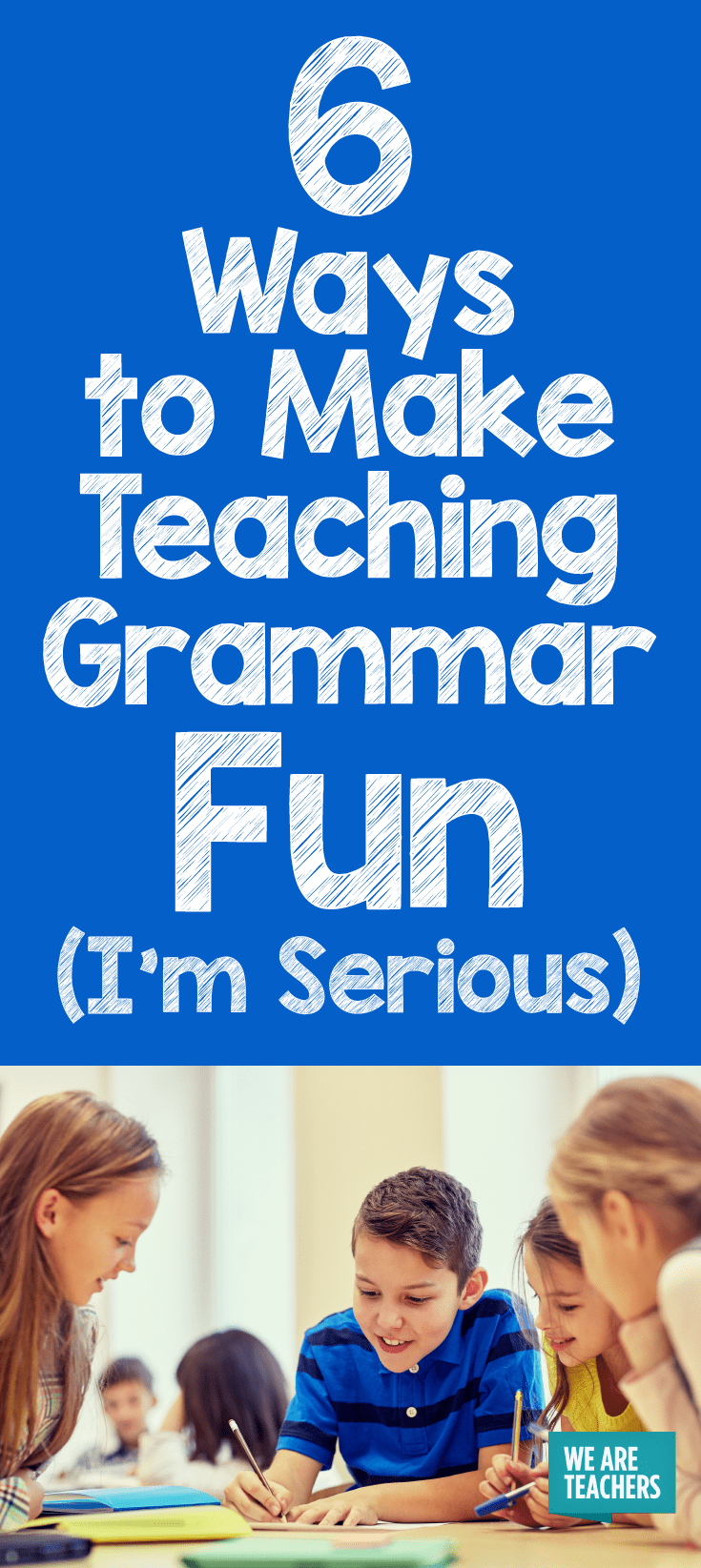I love grammar. But convincing my students to love grammar sometimes feels like trying to convince a bobcat to enjoy a nice, relaxing ice bath.
It’s true that students are more likely to be engaged in the learning process if you’re excited about the content, but I’ve noticed that students will stay engaged if they’re participating in a way that leaves room for creativity, choice or snort-inducing laughter.
Here are some ways to put a little grammar fun into your routine!
1) Build grammar practice into fun writing assignments.
My most recent assignment for students to practice comma usage was to choose between writing a letter using one of the following points of view: an old curmudgeon complaining to city hall about a completely trivial issue, a teenager writing to their* celebrity crush, or an alien writing back to their alien friends after visiting Earth. (Trust me, they got into it.)
2) Make funny examples or practice sentences.
I think it is totally worth the effort to write your own practice sentences for grammar. Sometimes if I’m on top of things enough to be working on lesson plans in advance, I call a rotating list of students over to my computer to ask if they’re willing to be featured in my practice worksheets and to check if what I’ve written about them is OK. These sentences create record-high student engagement for modeling and independent practice because every single student is listening to hear who’s next. The sentences also contribute to a really fun (albeit cackle-y) classroom environment.
Here are some examples of what I’m talking about:
I love my pretzels so much said jose I often sing lullabies to them
in her spare time stella enjoys throwing flaming donuts into the gulf of mexico
rachel won the race against usain bolt after tying his shoelaces together (bad sportsmanship, rachel)
3) Make a bulletin board or anchor chart called “Why Grammar Matters” and have students contribute.
They can bring funny or surprising pictures of misspellings, omitted punctuation or other grammar errors from real life or the internet. Here’s one to get you started:

4) Have “story time” with this book one day.
You would be shocked at how psyched secondary kids would be to sit cross-legged on the floor to listen to a story.
5) Play Reviewsical Chairs with grammar concepts you’ve been learning.
I. Love. Reviewsical. Chairs. It’s the same as normal musical chairs, but the last person left gets to challenge a student who is seated to a showdown. The showdown consists of you asking a grammar question of some kind to the two students—it can be an incorrect sentence projected on the board, a sentence spoken verbally that they have to write with correct punctuation—and the first student to answer “wins” the chair. The game is crazy-fun, and students get so excited to play it that I now have to give a safety talk to students prior to every time we play.
6) Dress up as grammar.
This could be a thing that you do as the teacher for Halloween or a random Friday, but I think it would be fun to figure out a way for students to participate too. Consider acting out or dressing up as the following:
Dependent clause: A Santa who goes around asking everyone if they can give him a ride, loan him $20, make him a sandwich, etc.
Possessive pronoun: Wears a shirt that says “MINE” and goes around stealing others’ pencils and belongings (eventually gives them back).
Dangling preposition: Walks around with a fishing rod that has “caught” a piece of paper with a preposition written on it.
Part of speech: Has a sign around neck that says “SPEE.” (Get it?)
What are your favorite ways to teach grammar?
Love, Teach teaches secondary English and writes about it at loveteachblog.com. You can follow her on Facebook or on Twitter, where you are highly encouraged to tag her in a picture of you dressed up as one of her grammar examples.
*I’m intentionally using “they” as a singular pronoun in this post because the AP Stylebook said I could. I love grammar!


